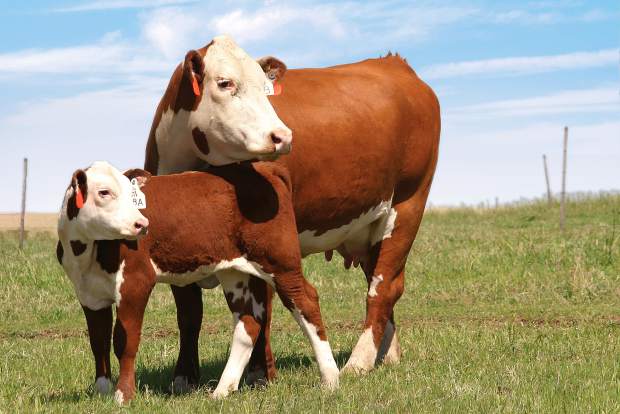
Weekly, Oklahoma State University Extension Beef Cattle Nutrition Specialist Paul Beck offers his expertise on the beef cattle industry. This is part of the weekly series known as the “Cow Calf Corner,” published electronically by Dr. Derrell Peel, Mark Johnson, and Beck. Today, Beck warns of grass tetany and milk fever in spring calving cowherd.
Many years, we are calving during the early spring with cows grazing lush pastures. When cows that have just calved are grazing cool-season annual pastures we often find mature cows that are in otherwise good condition and health with unusual behaviors, unsteady gait, or inability to rise. These are early signs of both grass tetany and milk fever. Both of these metabolic diseases are common in adult cows that have recently calved.
Grass tetany is a condition associated with inadequate magnesium in the diet and inefficient uptake of magnesium from the bone in older cows. We often see grass tetany with older cows grazing on small grain pastures because magnesium is often marginal to low and potassium is high in these forages. The high potassium interferes with magnesium absorption in the small intestine. Mature lactating cows are most susceptible because not only is dietary magnesium limited but these cattle are also losing magnesium through the milk they produce.
The most common method of preventing grass tetany is to supplement the herd with magnesium beginning at least 1 month prior to spring grazing. Mineral supplements should have 10 to 12% magnesium to offset the magnesium deficiency and prevent grass tetany from occurring.
Milk fever, also called parturient paresis (parturition paralysis), is a common metabolic disease in dairy cows, but can be an issue in older mature beef cows. The disease is often associated with the start of lactation and usually occurs within 72-hours of calving. Calcium is not only important for bone formation but also has important roles in nerve and muscle function.
When cows are fed high dietary calcium pre-calving the mechanisms for calcium absorption in the GI tract become inefficient to minimize calcium absorption and focus on mineral storage in the bone. When cows calve their calcium requirements increase due to milk production, but they are unable to rapidly increase calcium absorption and mobilization of calcium from the bone to maintain blood calcium levels for muscle contraction and nervous system function. There are indications that milk fever can be associated with vitamin D deficiency because of its role in calcium metabolism. Vitamin D is naturally produced in the skin when exposed to sunlight UV waves. Providing supplemental vitamin D during the winter months is an important consideration because sunlight intensity is not high enough for adequate vitamin D formation and deficiencies may develop. Feeding high calcium levels during late pregnancy should be avoided, but dietary calcium should be increased at calving to prevent milk fever.
A veterinarian should be consulted for diagnosis and treatment. If deaths have occurred, your veterinarian should be consulted to properly establish cause of death. These metabolic diseases are hard to differentiate, and are difficult to treat in a timely manner, but for both prevention is the best option.
Paul Beck, OSU Extension beef cattle specialist, discusses ways to adapt mineral supplementation as spring calving approaches on SunUpTV from January 25, 2025 at https://www.youtube.com/watch?v=7zPms0C-fr8

















